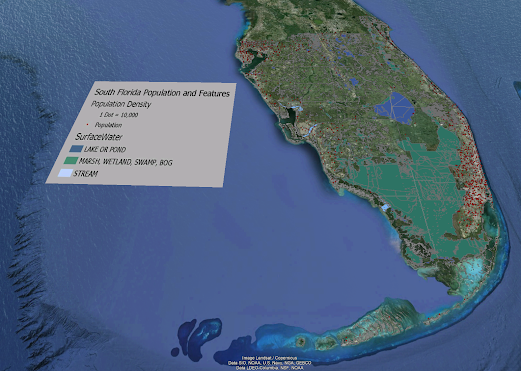Data Classification
For this weeks lab we were tasked with creating a compilation map of Miami Dade using the census data that we were provided with and apply what we had learned in lecture about the four different classifications (Equal Interval, Quantile, Standard Deviation, and Natural Breaks). Above I have created the maps adhering to the map guidelines provided. Top left is the map using Equal Interval Classification which creates classes that
all have equal ranges in the data. These range values are determined by dividing
the total data range by the number of classes. It highlights the extreme values
and clusters a large number of the data into a couple categories. Top right is the map using Natural Breaks Classification which in this
classification method, class ranges are determined based on algorithms that
attempt to make all values within a class as similar to each other as possible,
and also as different as possible to values in other classes. Shows extreme
values and clusters large group of values together. The bottom left map is using the Quantile Classification method, which divides the
distribution into an equal number of observations. Equally divides the total number
of values into the desired number of classes. No classes left empty but leads
to a wide range of values in certain categories. The bottom right map is using the Standard Deviation Classification method, which is based divisions of the
standard deviation such that the area under the graphed curve is divided into
equal sections. This method will put the majority of observations in one class
surrounding the average value, while other classes will have fewer and fewer data
points as they get farther away from the mean. No gaps in legend to confuse map
reader.




No comments:
Post a Comment